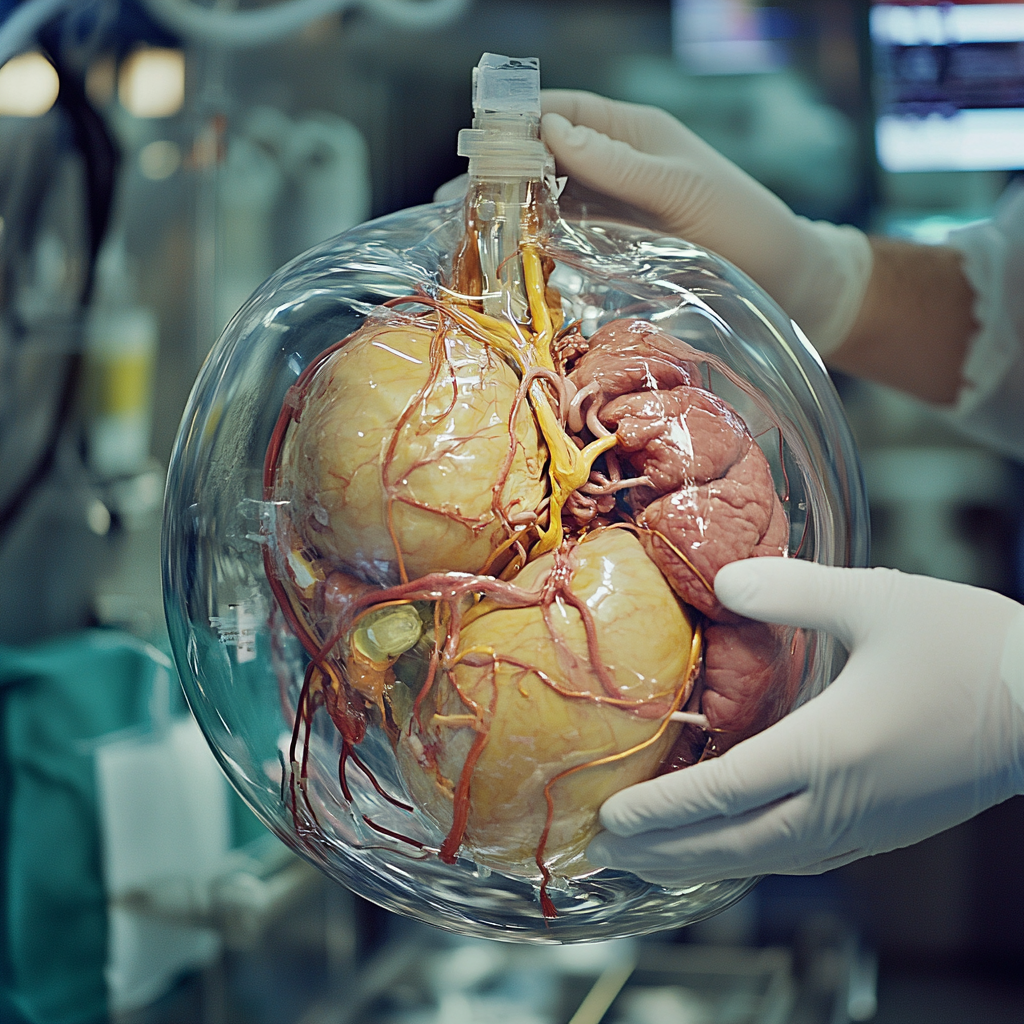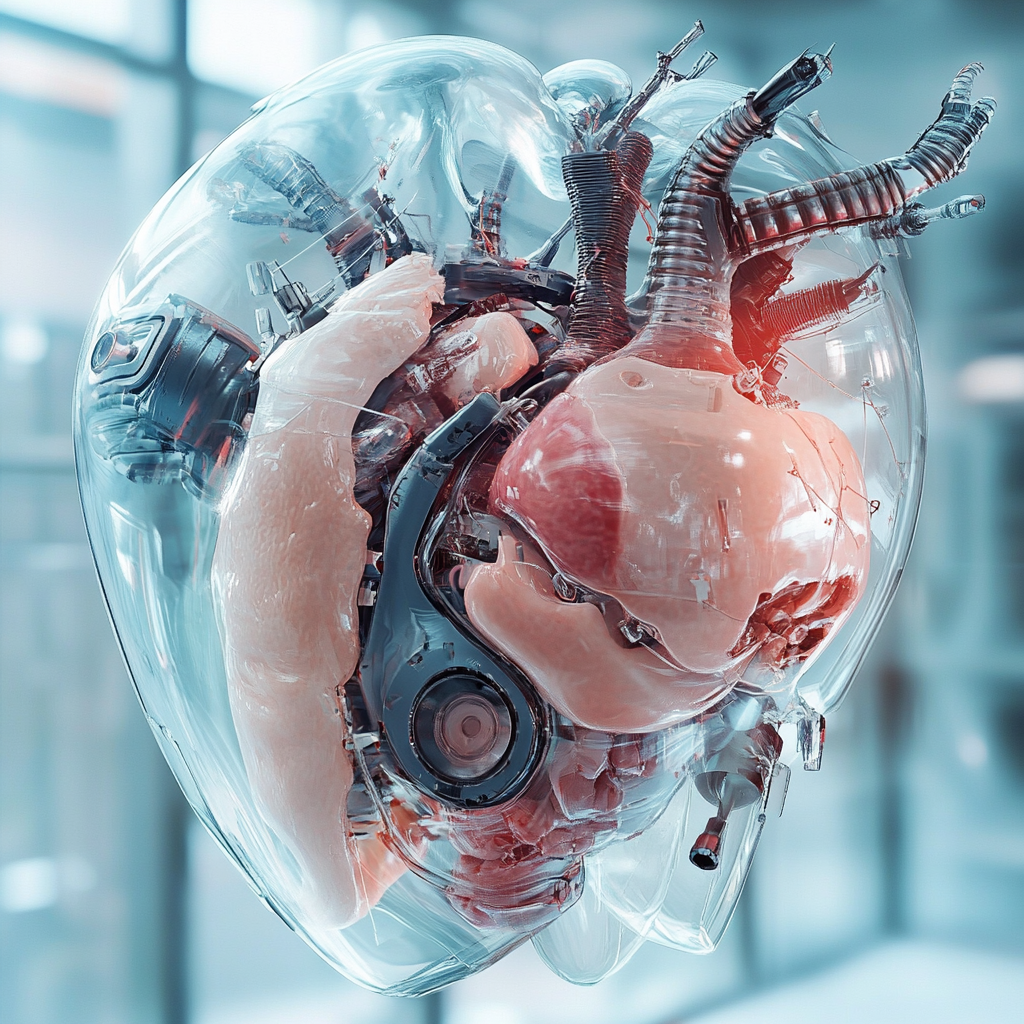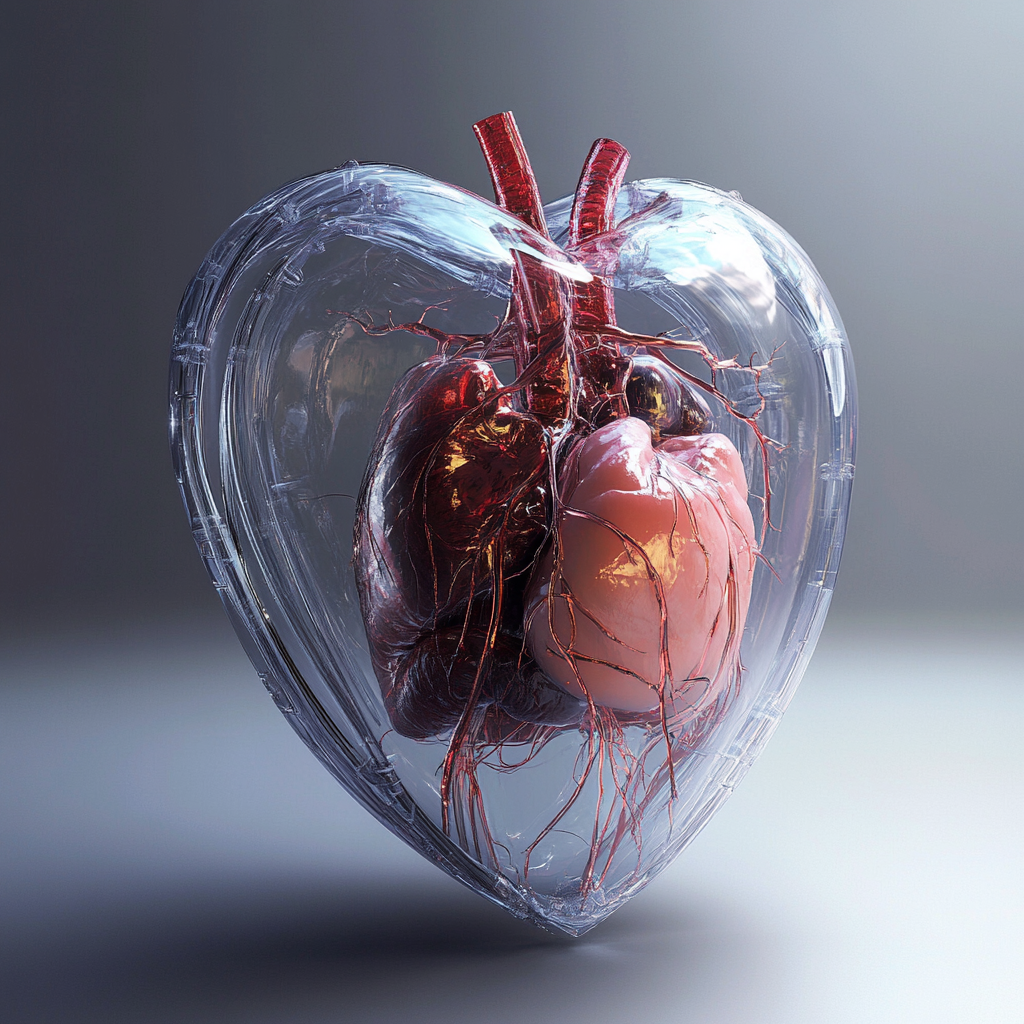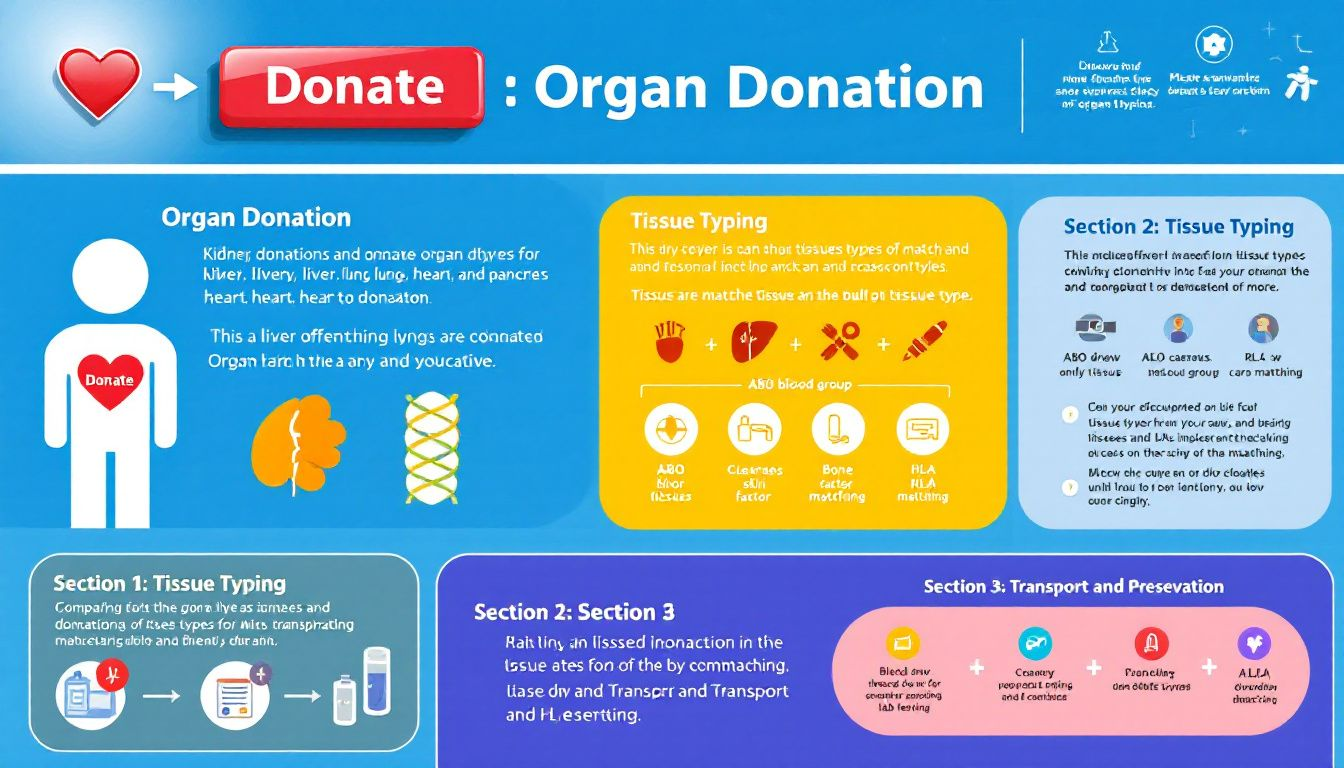Understanding the Key Differences Between Organ and Tissue Transport
The differences between organ and tissue transport primarily involve the methods of preservation, time sensitivity, and logistics required for each. While both are crucial for transplantation success, organs typically require faster transport and more stringent handling compared to tissues. This article explores these differences in detail, providing a clear understanding of the unique challenges and requirements for both.
Key Takeaways
Organ and tissue donation can save lives, and anyone can become a donor, which increases the chances of finding matches for those in need.
Organ transport requires meticulous coordination and time-sensitive handling to maintain organ viability, while tissue transport allows for more flexible scheduling due to longer viability periods.
Advancements in technology, including improved preservation methods and real-time tracking systems, significantly enhance the success rates of both organ and tissue transplants.
Overview of Organ and Tissue Transport

Organ and tissue donation is a remarkable act of generosity that can save and enhance lives in ways that were once thought impossible. Transplantable organs include the heart, intestines, liver, lungs, kidneys, and pancreas, each playing a crucial role in sustaining life. Commonly donated tissues encompass a wide array of body parts, including a donated organ, eyes, and various tissues, which can be used to restore function and improve quality of life for recipients. If more people choose to donate organs, the impact on those in need could be profound.
One of the most inspiring aspects of organ and tissue donation is its inclusivity. Anyone can become an organ and tissue donor. This includes people of all ages, races, and genders. This broad eligibility opens up a vast pool of potential donors, increasing the chances of finding matches for those in need.
The Waiting List, a national database of patients categorized by organ type, highlights the urgency and ongoing need for more donors to meet the demands of those awaiting lifesaving transplants. Whether through deceased donors, living donors, or through the national donate life registry, the impact of organ and tissue donation is profound and far-reaching.
Organ Transport: Specifics and Challenges

Transporting organs for transplant surgery involves a highly coordinated and time-sensitive process. From the moment an organ is recovered from a donor, the clock starts ticking. The transplanted organ’s viability relies on meticulous handling, precise timing, and advanced preservation methods to ensure optimal condition upon arrival. This section will delve into the specifics and challenges unique to organ transport, focusing on preservation techniques, the critical nature of time, and the logistics involved.
The complexities of organ transport cannot be overstated. It requires seamless coordination among various stakeholders, including organ procurement organizations, transplant teams, and regulatory bodies, to ensure that each step of the organ donation process is executed flawlessly.
As we explore the subsections, you’ll gain a deeper understanding of the innovative techniques and rigorous protocols that make successful organ transplants possible.
Preservation Techniques for Donor Organs
Preserving donor organs is crucial for the success of an organ transplant. New machine perfusion techniques are gaining popularity as alternatives to the traditional static cold storage method. These advanced techniques involve continuously pumping a preservation solution through the organ, mimicking the natural blood flow, and thereby maintaining the organ’s viability for a longer period. This method is particularly beneficial for organs like kidneys and livers, which are sensitive to ischemia.
Organs typically require lower temperatures for storage compared to tissues, and specialized packaging that maintains cold chain logistics is essential. For instance, organs are often stored at temperatures around 4°C, which significantly slows down metabolic processes and preserves the organ’s functionality.
Technological advancements are being implemented to optimize the recovery, preservation, and rehabilitation of donor organs, addressing the gap between supply and demand.
Time Sensitivity in Organ Transport
Time is of the essence when it comes to organ transport. The range of organ preservation times varies significantly depending on the type of organ. For instance, hearts remain viable for only 4–8 hours, while kidneys can be preserved for up to 24–36 hours. Therefore, surgical recovery must take place as soon as possible after the donor’s death to maintain organ viability.
Successful organ transplantation often hinges on the rapid recovery and transport of organs to minimize ischemia time. Donated organs can travel hundreds or even thousands of miles to reach their recipients, necessitating efficient and reliable transport methods.
This underscores the importance of well-coordinated logistics to ensure that organs arrive at their destination in the shortest possible time frame.
Logistics and Coordination in Organ Transport
The logistics and coordination involved in organ transport are a marvel of modern medicine. Multiple organizations work in tandem to ensure the timely delivery of organs to recipients. This involves everything from the initial recovery of the organ, packaging, and transportation to the final transplantation surgery. Each step must be meticulously planned and executed to prevent any delays that could compromise the organ’s viability.
Organizations involved in organ and tissue transport must adhere to stringent guidelines established by regulatory bodies to maintain the integrity of the donation process. These regulations ensure that the transport of organs and tissues complies with both national and international standards, safeguarding the safety and efficacy of the transplant.
The combined efforts of coordination between organizations and adherence to regulations are essential for maximizing the chances of successful transplants.
Did you know that you can get from Manhattan to JFK in under 5 minutes without driving?
Blade offers seamless helicopter transfers from our West 30th Street Lounge in Manhattan to JFK Airport in just 5 minutes from $195 per seat.
Skip the traffic and ditch the stress with Blade's year-round airport service.

Tissue Transport: Specifics and Challenges

While the transport of organs often grabs headlines, the transport of tissues is equally vital and comes with its own set of challenges. Tissues such as skin, bone, and corneas are regularly donated and transplanted, providing essential medical benefits to recipients. This section will explore the specific challenges associated with tissue transport, including preservation methods, time frames for tissue viability, and the logistics involved.
Breakthroughs in tissue transplantation are possible if existing challenges are addressed. Unlike organs, which require immediate transport and transplantation, tissues can often be preserved for longer periods, allowing more flexibility in the transport process. However, this does not diminish the importance of stringent preservation and logistics protocols to ensure the tissues remain viable and safe for transplantation.
Preservation Methods for Donated Tissues
Cryopreservation is a commonly used method for preserving various tissues, including skin and bone. This technique involves freezing the tissues at extremely low temperatures to halt all biological activity, effectively preserving the tissues for future use. New cryopreservation methodologies, such as ice-free techniques like vitrification, have shown promise in preserving tissues without the ice-related damage that can occur with traditional methods.
Isochoric preservation techniques allow tissues to be stored at low temperatures without ice formation, reducing cellular damage during the preservation process. Supercooling strategies inspired by nature also enable long-term storage of tissues by maintaining them at subzero temperatures without freezing.
These advanced preservation methods are crucial for extending the shelf life of donated tissues and improving the outcomes of tissue transplants.
Time Frames for Tissue Viability
Tissue viability is a critical factor in the success of tissue transplants. Certain tissues can remain viable for transplantation for weeks or even years under appropriate conditions. This extended viability allows for more flexible scheduling of transplant surgeries and reduces the urgency associated with organ transplants, where time is often a critical factor.
The success rates of tissue transplants are closely tied to the condition of the tissues at the time of transplantation. Ensuring that tissues are preserved and transported under optimal conditions can significantly improve graft acceptance and overall transplant outcomes. This highlights the importance of adhering to best practices in tissue preservation and transport.
Logistics and Coordination in Tissue Transport
Effective coordination is essential for the successful transport of donated tissues. This involves collaboration between hospitals, procurement organizations, and transport services to ensure that tissues are delivered to recipients in a timely and efficient manner. Organizations like Gift of Hope work with the United Network for Organ Sharing (UNOS) to identify potential recipients and coordinate the logistics of tissue transport.
Coordination in tissue transport is crucial for ensuring that tissues remain viable and safe for transplantation. This includes adhering to regulatory guidelines, maintaining proper storage conditions, and ensuring that all parties involved are well-informed and prepared.
The combined efforts of these organizations play a vital role in the success of tissue transplants. Multiple organizations work in tandem to ensure the timely delivery of organs to recipients, a process requiring expertise in Organ Matching and Transport Logistics.
Differences in Handling and Storage
The handling and storage requirements for organs and tissues differ significantly due to their unique biological properties. Organs typically need to be stored at specific low temperatures to maintain viability, while tissues have more flexible temperature requirements. This section will delve into the specifics of these differences, focusing on temperature requirements, packaging and sterilization methods, and regulatory and compliance issues.
Different materials and techniques are used for the packaging and sterilization of organs and tissues to ensure contamination is prevented during transport. These measures are crucial for maintaining the integrity of the donation process and ensuring that both organs and tissues arrive at their destination in optimal condition.
The transport of organs and tissues is governed by distinct regulatory frameworks, which require compliance with various national and international standards.
Temperature Requirements
The temperature requirements for storing organs and tissues are tailored to their specific needs. Organs typically require cold storage on ice for preservation, allowing hearts to be viable for 4–8 hours and kidneys for 24–36 hours before transplantation. Different organs have specific temperature ranges for preservation, with many requiring refrigeration at around 4°C.
In contrast, the storage conditions for tissues are often more flexible, allowing for a broader temperature range compared to the stricter requirements for organ preservation. This flexibility can simplify the logistics of tissue transport, but it is still essential to maintain appropriate conditions to ensure tissue viability and safety.
Packaging and Sterilization
Packaging and sterilization are critical components of the transport process for both organs and tissues. Different types of packaging materials are utilized to ensure that contamination is prevented during transport. These materials must be sterile, non-toxic, and provide a barrier to contamination throughout their intended use.
The packaging materials and techniques used for organs and tissues reflect their unique handling requirements. For instance, organs often require specialized packaging that maintains cold chain logistics, while tissues may use standard medical packaging to prevent contamination. Ensuring the sterility and safety of these materials is paramount to the success of the transplant process.
Regulatory and Compliance Issues
The transport of organs and tissues must adhere to specific regulatory guidelines to ensure safety and efficacy. These guidelines are established by regulatory bodies such as the FDA and the American Association of Tissue Banks, which enforce stringent standards for tissue safety. Tissue banks are regularly inspected to ensure compliance with these federal regulations, thus ensuring that all tissues meet the necessary safety standards before they reach recipients.
Sterilization methods, such as the use of gamma radiation, are employed to ensure that the packaging of organs and tissues remains sterile and free from harmful residues. This regulatory oversight is crucial for maintaining the integrity of the transplant process and ensuring that both donors’ and recipients’ health and safety are protected.
Did you know that you can get from Manhattan to JFK in under 5 minutes without driving?
Blade offers seamless helicopter transfers from our West 30th Street Lounge in Manhattan to JFK Airport in just 5 minutes from $195 per seat.
Skip the traffic and ditch the stress with Blade's year-round airport service.

Role of Technology in Organ and Tissue Transport

Technology plays a pivotal role in enhancing the efficiency and outcomes of organ and tissue transport. The integration of advanced technologies in surgery, immunology, genetics, and pharmacology has significantly improved the success rates of organ transplants. This section will explore the technological advancements that have revolutionized both organ and tissue transport, highlighting key innovations and their impact on transplant outcomes.
Advancements in technology have led to the development of real-time tracking systems, portable preservation devices, and improved cryopreservation techniques. These innovations ensure that organs and tissues are preserved under optimal conditions during transport, thereby increasing the chances of successful transplants.
The following subsections will delve into specific technological improvements in organ and tissue transport.
Advances in Organ Transport Technology
One significant advancement in organ transporthttps://www.blade.com/organ-transport technology is the development of the KidneyVault system by Paragonix Technologies. This portable perfusion device continuously monitors and preserves donor kidneys during transport, simplifying kidney preservation and improving transplantation outcomes. The KidneyVault system represents a pioneering step in organ transport, allowing for better and longer preservation of donor kidneys.
Additionally, real-time tracking systems have been developed to monitor the condition of organs during transport. These systems provide critical data on temperature, humidity, and other environmental factors, ensuring that organs are maintained under optimal conditions until they reach their destination.
Portable organ preservation devices and real-time tracking are just a few examples of how technology is revolutionizing organ transport.
Technological Improvements in Tissue Transport
Technological advancements in tissue transport have also seen significant progress. New cryopreservation techniques, such as ice-free cryopreservation and isochoric preservation, are enhancing the preservation of tissues during transport. These methods reduce cellular damage and increase the viability of tissues, making them more suitable for successful transplants.
Bioengineering solutions, including the use of nanotechnology, are being explored to improve tissue preservation methods. These innovative approaches aim to enhance the viability of tissues during storage and transport, ultimately improving the outcomes of tissue transplants.
As technology continues to evolve, the potential for more effective tissue preservation and transport grows, offering new hope for patients in need of tissue transplants.
Impact on Transplant Outcomes

The success of organ and tissue transplants is heavily influenced by the conditions under which they are transported. Timely transport is critical for maintaining the viability of organs and tissues, demonstrating how organ transport saves lives by minimizing ischemia time and reducing transport-related delays. This section will explore how advancements in transport methods impact transplant outcomes, focusing on the success rates of both organ and tissue transplants.
Advancements in transport technology and improved preservation methods have significantly enhanced transplant outcomes. By addressing existing challenges and optimizing transport conditions, the likelihood of successful graft acceptance and long-term survival of transplanted organs and tissues is greatly increased. The following subsections will provide a detailed look at the success rates of organ and tissue transplants.
Success Rates of Organ Transplants
The success rates of organ transplants are closely tied to the recipient’s immune system response. Immunosuppressive medication is essential to prevent organ rejection, which can manifest in various forms, including acute cellular rejection, acute humoral rejection, and chronic rejection. Acute rejection can occur within the first few months post-transplant, while chronic rejection is a slower process that can ultimately lead to organ failure.
Hyperacute rejection is another critical factor, occurring within 24 hours post-transplant and resulting in blood clots and graft necrosis. Minimizing ischemia time and ensuring optimal transport conditions reduces the risk of rejection, thereby improving the success rates of organ transplants. The role of advanced technology and improved preservation methods cannot be overstated in achieving these positive outcomes.
Success Rates of Tissue Transplants
The success rates of tissue transplants are significantly influenced by the transport and preservation conditions. Optimal transport protocols can lead to higher survival rates, demonstrating improved acceptance and integration of transplanted tissues. For instance, receiving a kidney from a living donor can quadruple a patient’s chances of survival compared to remaining on the waiting list.
The median survival time for kidney transplant recipients is 12.4 years, compared to only 5.4 years for those on the waiting list. In kidney transplants, over 50% of recipients survive for seven years, compared to around 25% of patients on the waiting list.
These statistics highlight the critical importance of effective transport practices in enhancing the long-term success and quality of life for tissue transplant recipients.
Ethical Considerations in Organ and Tissue Transport
Ethical considerations play a crucial role in organ and tissue transport. Informed consent is essential and varies according to national laws, influencing organ donation practices. Public awareness and education are vital for increasing organ donation rates and addressing misconceptions that may discourage individuals from becoming donors.
Religious beliefs and social values also significantly impact decisions regarding organ donation. Most religious traditions support organ and tissue donation as a gesture of humanitarianism and love. Ensuring the confidentiality and protection of both donors’ and recipients’ data is another critical ethical principle that must be upheld.
Addressing these ethical considerations fosters a more supportive environment for organ and tissue donation.
Bottom Line: Differences Between Organ and Tissue Transport
Understanding the key differences between organ and tissue transport is crucial for appreciating the complexities and challenges involved in these life-saving processes. From preservation techniques and time sensitivity to logistics and technological advancements, each aspect plays a vital role in ensuring successful transplant outcomes. The impact of timely and efficient transport on the success rates of organ and tissue transplants cannot be overstated.
By addressing the ethical considerations and fostering public awareness, we can encourage more people to become organ and tissue donors. The advancements in technology and improved preservation methods offer new hope for patients in need of transplants. Together, we can support the ongoing efforts to save and improve lives through organ and tissue donation.
FAQs about Differences Between Organ and Tissue Transport
What organs and tissues can be donated?
You can donate vital organs such as the heart, liver, kidneys, lungs, pancreas, and intestines, along with tissues like corneas and skin. These donations can significantly impact the lives of others in need.
How long can organs and tissues be preserved for transplantation?
Organs and tissues have varying preservation times; hearts are viable for 4–8 hours, kidneys for 24–36 hours, and some tissues can last for weeks or even years with proper conditions. It's crucial to understand these timeframes for successful transplantation outcomes.
What are some advanced preservation techniques for donor organs?
Advanced preservation techniques for donor organs include new machine perfusion methods and specialized packaging to ensure effective cold chain logistics, which significantly enhance organ viability.
How does technology improve organ and tissue transport?
Technology significantly improves organ and tissue transport by utilizing portable preservation devices, real-time tracking systems, and advanced cryopreservation techniques, which collectively enhance the viability of transplants. This ensures better outcomes for transplant recipients.
What are some ethical considerations in organ and tissue transport?
In organ and tissue transport, it is crucial to prioritize informed consent, respect religious beliefs, ensure confidentiality, and protect the privacy of both donors and recipients. These considerations are essential for maintaining trust and integrity in the transplantation process.
Disclaimer:
Please be aware that the content on this page has been generated by using artificial intelligence language models and may contain errors, inconsistencies, or outdated information. It is provided as-is without any warranties or guarantees of accuracy. We strongly recommend using this content as a starting point for further research. We disclaim any liability for damages or losses resulting from the use or reliance on this content.